| Title | Pages |
|---|---|
| Ionic Current Rectification in Track-Etched Single Conical Nanopores The ionic current rectification, which is a characteristic behavior of asymmetric nanopores, is an important phenomenon, especially in biomolecule analysis. Rectification in nanopores resembles the diode element in electrical circuits, where the ion current is allowed in only one direction. This behavior depends on certain parameters such as pore geometry, the surface charge density of the pore, ionic concentration of electrolyte, applied potential and pressure. In this study, we investigated the rectification behavior of ionic currents in conical pore experimentally and verified the results theoretically. By altering the pH value of the electrolyte solution, we have obtained a variety of current-potential (I-V) curves which have different ion current rectification values. We have compared these values with simulation results and figured out an estimate for the surface charge density of the nanopore walls. 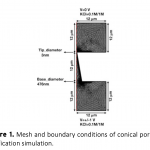 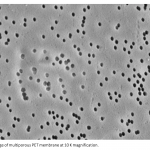 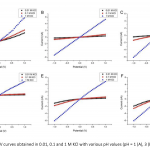 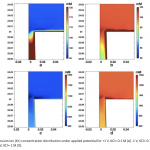 | 225 - 234 |
| Sunflower Stalk Based Activated Carbon for Supercapacitors In this study, a combination of physical and chemical activation was used to produce activated carbon from sunflower stalks. The NaOH activated carbon possess a high specific surface area of 2658 m2/g. The micropore fraction and surface area obtained is much higher than a commercial activated carbon. The electrodes from the activated carbons were electrochemically analyzed in a two-electrode supercapacitor cell with 1 M H2SO4 electrolyte. The results show that the high surface area of sunflower activated carbon resulted in significantly high specific capacitance of 207 F/g at 0.05 A/g current density. Moreover, a high energy density of 18.4 Wh/kg was obtained at the power density of 80 W/kg. The results also showed the importance of pore structure on the supercapacitor performance. 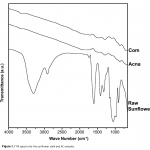 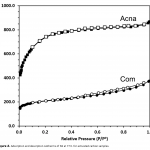 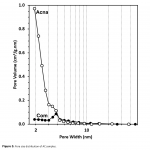 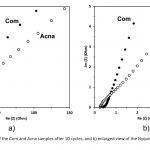 | 235 - 247 |
| Bisphenol A Removal From Aqueous Phase via Polymeric Microbeads The main objective of this study is to investigate the effectiveness of poly(divinylbenzene-N-methacryloyl-L-tryptophan methyl ester) [poly(DVB-MATrp)] microbeads (average diameter = 150-200 μm) to remove bisphenol A (BPA) from aqueous phase. The poly(DVB-MATrp) microbeads were synthesized by copolymerizing N-methacryloyl-L-tryptophan methyl ester (MATrp) in the presence of divinylbenzene (DVB). The poly(DVB-MATrp) beads were characterized by Fourier transform infrared spectroscopy (FTIR), elemental analysis, scanning electron microscopy (SEM) and swelling test. The efficiency of poly(DVB-MATrp) microbeads for adsorption of BPA from aqueous medium was evaluated by investigating the effects of pH, initial concentration, contact time and temperature. The adsorption capacity of the microbeads was determined to be 171.1 mg/g at pH 7.0, 25°C. The Langmuir and Freundlich isotherm models were used to fit adsorption data. The adsorption process obeyed pseudo-second-order kinetic model. The prepared microbeads can be repeatedly used for adsorption of BPA without a significant change in the adsorption capacity. 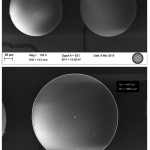 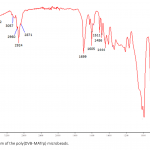 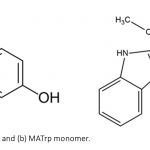 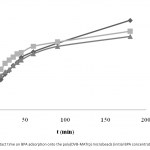 | 249 - 258 |
| Sterol Fractionation of Refined Olive Oil for Sale in Mediterranean Region with GC-FD, Composition Analysis of Triterpenic Dialkols and Validation In this study, compositional analysis of the sterol fraction and triterpenic alcohols of olive oil was made assess the degree of purity of the oil and the absence of admixture with other plant oils. This determination also permited characterization of the type of olive oil. In the present work, 30 samples of olive oil supplied from the markets of Adana, Osmaniye and Mersin in 2015 and 2016 were analyzed, and the validation studies were carried out in the analysis method used. The sterol fractions were separated from the unsaponifiable fraction by silica gel plate chromatography, and later they were analyzed as the trimethylsilyl ether derivatives by capillary column gas chromatography. The validation results obtained were evalu- ated in accordance with TGK-Olive Oil and Pirina Oil Communiqué (Communiqué No: 2010-35). 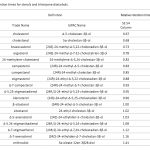 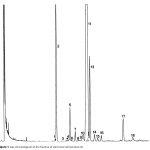 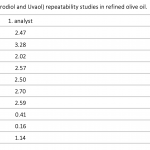 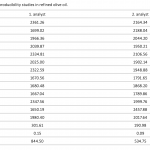
| 259 - 266 |
| Fast Punicalagin Content Analysis of Various Brands of Pomegranate (Punica granatum L.) Juices by UPLC-MS Punica granatum L., commonly known as pomegranate, has a good source of bioactive polyphenolic compounds that has been widely used as a traditional Chinese herbal medicine owing to their important biological properties including cardiovascular disease, arthritis, diabetes, and cancer. Commercial pomegranate juice is generally obtained via pressing whole pomegranate and its peels. Then, the most abundant ingredient, punicalagin, can be extracted into the juice. However, punicalagin levels may vary in commercial pomegranate juice and it can range from 0.017 to 2 g/L. In this study, we analyzed punicalagin content from six different brands of pomegranate juices by using UPLC-MS method. First, punicalagin standards were prepared from 50 μM to 5 μM in buffer A (0.1% formic acid in water) and standard calibration curve was created. After that, three mass tune parameters including ionization voltage, desolvation temperature and source temperature of ESI source were optimized to obtain better peak shapes and correct quantification of the α- and β- isomer peaks of punicalagin. After analysis of six different brands of pomegranate juices, it was seen that punicalagin levels from different juice samples varied from 0.007 to 0.3 g/L. 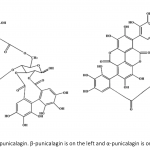 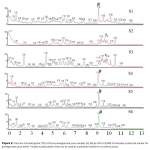 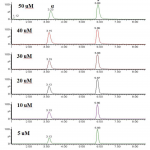 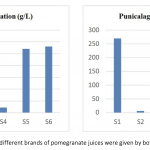
| 267 - 275 |
| Conventional and Microwave Assisted Synthesis of New Triazole Derivatives and Evaluation of Their Antimicrobial Activities In this study, four new oxime ether derivatives were synthesized and their antimicrobial activities were evaluated. At the same time, a comparison of the efficiency of the conventional method of synthesis with the microwave method was investigated. The structures of synthesized compounds were confirmed by their IR, 1H-NMR, and HRMS spectra. Antimicrobial activity of the compounds was tested against two Gr (+) bacteria (S. aureus, E. faecalis), two Gr (-) bacteria (P. aeruginosa, E. coli), and three yeast-like fungi (C. albicans, C. krusei, C. parapsilosis) by modified agar dilution method. 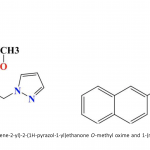 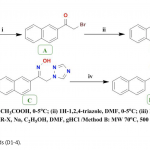 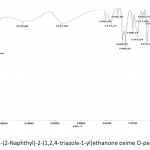 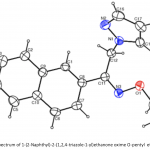 | 277 - 286 |
| Electrochemical Characterization of Carbonized Typha Tassel Modified Screen- Printed Electrode and Its Enzymatic Glucose Oxidation Application Converting biomass into cheaper but valuable products is very important for a more sustainable world. Especially with emerging technology, the use of hazardous materials in the synthesis of substances such as carbonaceous materials pose a threat to our environment. In this study, electrochemical performance of a carbonaceous material synthesized from typha tassel using a simple and cheap method without any hazardous substances was investigated. It was then used as an enzyme immobilization material for electrochemical glucose oxidation to demonstrate its potential application in bioelectronics. Physical and chemical characterization of raw typha tassel (RTT) and carbonized typha tassel (CTT) were performed using SEM and FTIR techniques. CTT, was then grounded into fine powder, dispersed in DMF and coated onto screen-printed electrodes (SPEs). CTT modified SPEs were electrochemically tested using cyclic voltammetry in 0.1 M phosphate buffer containing 1 mM ferrocene carboxylic acid as a redox mediator at pH 7.4 Finally, glucose oxidase enzyme was adsorbed on CTT modified SPEs to demonstrate its performance in electrochemical enzymatic glucose oxidation reactions. SPE/CTT/GOx system showed promising electrochemical activity and stability at physiological conditions as well as good activity with adsorbed enzyme. This study suggests that CTT is very promising for an easy, effective and cheap ‘biomass to bioelectronics’ construction material. 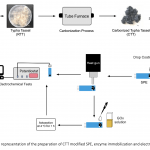 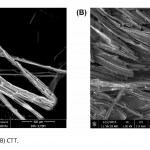 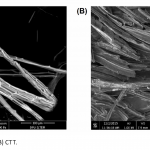 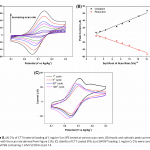 | 287 - 294 |
| Pollen Spectrum of Some Honey Samples Produced in Siirt-Turkey Melissopalynology is the microscopic analysis of the pollen in the honey. This branch of palynology has been extensively used to determine the purity and quality of honey with its geographical and floral origins. The foraging plants of honeybees can be determined by analyzing the honey. In this study, the honeys originated from Siirt region were investigated. Totally 24 honey samples were evaluated with their total pollen numbers, moisture and pollen compositions. Total pollen numbers were ranged between 2086-55710, with the mean value of 22506. The pollen composition can be defined as relatively rich. It was found that 75% of the honeys were containing more than 10 plant taxa. Frequently observed plant families were Asteraceae, Fabaceae and Lamiaceae. According to these results we can claim that the examined regions of the city are really important for quality honey production. 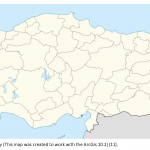 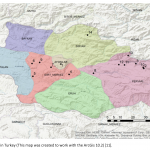 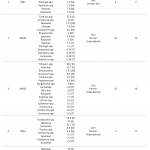 | 295 - 303 |
| A New, Sensitive and Disposable Electrochemical Immunosensor Based on Benzaldehyde Side Group Containing Phosphazene Polymer Modified ITO Substrate for Interleukin 1β Detection In this study, a novel electrochemical ultrasensitive immunosensor based on disposable benzaldehyde substituted phosphazene polymer (BSPP) modified ITO electrode was developed for interleukin 1β (IL 1β) detection. Aldehyde side groups containing phosphazene polymer (BSPP) synthesized via ring opening polymerization method. These aldehyde groups provided anchoring points for anti-IL 1β antibodies. The production process of the proposed immunosensor was monitored by electrochemical techniques like Electrochemical Impedance Spectroscopy (EIS) and Cyclic Voltammetry (CV). In addition, these fabrication steps were characterized by utilizing Scanning Electron Microscopy (FE-SEM) and Atomic Force Microscopy (AFM). Moreover, BSPP polymer layer on the polymer coated electrode surface was investigated by using Energy Dispersive X-ray (EDX). The fabricated immunosensor had a low detection limit (9.3 fg/mL) and a wide linear detection range (0.03-7.5 pg/mL). Moreover, it had good reproducibility (1.82%), excellent repeatability (1.56%), good selectivity and high stability. The results of experiments showed that the BSPP polymer was desirable platform for IL 1β antigen detection in clinical diagnosis and practical applications. The applicability of the suggested biosensor was tested by measuring IL 1β level in human serum and the suggested immunosensor had acceptable results for quantitative analysis. 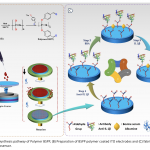 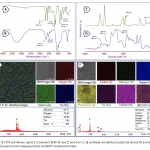 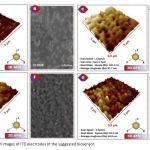 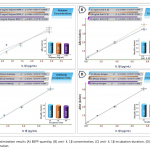 | 305 - 315 |
| The Influence of the Myricetin on the Liver, Kidney, Spleen and Some Endocrine Glands of Male Rats at Prepubertal Period In this study, the effects of myricetin exposure to rats from postnatal day (PND) 23 to 53 at various doses were investigated. The male rats were divided into five groups and each group consisted of six animals. Group of rats were treated with myricetin 25 and 50 mg/kg/day in a suspension of corn oil. Positive control males were received gavage orally with 17α-ethinyl estradiol 0.7 and 7 μg /kg /body weight day and control males were received corn oil. End of the study, weights of liver, kidney, spleen, pancreas, thymus and adrenal gland were measured. Organ/body weight ratios were calculated and tissue sections were examined histologically. In liver, the TUNEL method was applied and evaluated. In results, absolute liver weights were decreased statistically in 0.7 and 7 μg/kg/day etinil estradiol and 50 mg/kg/day myricetin treatment groups, compared with the oil control group. Histopathological examination of the liver, kidney and spleen revealed significantly increased frequency of congestion, cell degeneration and mononuclear cell infiltration when compared with the control group. Also myricetin dose groups, the apoptotic cells were increased. This study demonstrated that orally gavages myricetin caused adverse effects on male liver, kidney, spleen and endocrine glands, during peripubertal period to pubertal period. 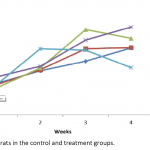 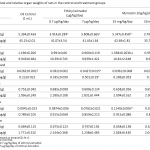 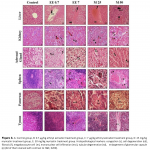 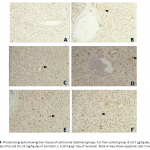 | 317 - 326 |